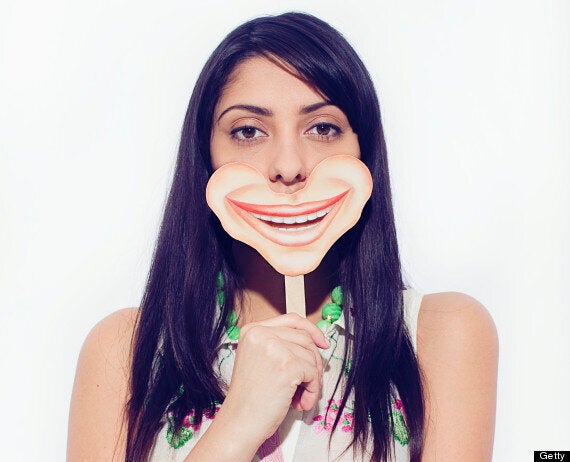Has any other facial function been so heavily debated?
From Mona Lisa's smile to Tyra Banks' god-awful 'smize' (smiling with your eyes), as well as various studies that suggest men are less attractive when they smile while the opposite is true for women, there's no end of debate on the subject.
But could you tell the difference between a real and a fake one?

That's what Spanish scientists set out to discover, at the University of La Laguna. Using the basis that we deduce how another person is feeling through facial expressions, researcher David Beltrán Guerrero said that while it's easy to figure out when someone is angry, sad or scared, expressions of happiness are far more complicated.
The scientists looked at how human beings use other forms of expression to hide their true feelings, reported ScienceDaily.com.
"The smile plays a key role in recognising others' happiness," he said. "But, as we know, we are not really happy every time we smile."
MORE ON HUFFPOST UK:
The Ten Commandments of Clutter: Simplify Everything to Be Happier
Some people smile to be polite, while others use it to conceal negative emotions. To take this line of thinking further, researchers "created faces comprising smiling mouths and eyes expressing non-happy emotions, and compared them with faces in which both mouths and eyes expressed the same type of emotional state."
Writing for the blog Buffer, Leo Widrich wrote: "Whenever we smile, there are 2 potential muscles we activate. The first one is the zygomaticus major and it controls the corners of your mouth. Whenever this muscle only is activated, it’s not actually a genuine smile. Scientists call this also the “social” smile. The second muscle, known to show sincerity is the obicularis occuli and it encircles our eye socket.
"The true smile also called the duchenne smile, named after the famous scientist who first separated the “mouth corners”-only smile, from the “eye socket” one."
So, what did the researchers find? When a person's smile was first looked at, it was very hard to tell between a real and a fake one. But the more a person looked at the smile and was then asked to categorise what 'emotion' each expression was giving out, the influence of the smile wobbled a bit.
However, it was found that 40% of the time, if someone thought the expression they were looking at was ambiguous, they would categorise it as happy as the eye is naturally drawn to the smiling mouth, not the eyes (which basically give the game away).
What's an easy way to tell a fake smile from a real smile? Body language expert Nicholas Fradet says:
- One of the key ingredient in a genuine smile is the movement of the orbicularis oculi muscle. This causes the eyes to close. The vast majority of people that fake smile will show no movements in the upper face area.
- For many people, crow’s feet appear outside the eyes when they smile honestly.
- Another way you can see if a person is fake smiling is if you can see the bottom teeth in her mouth.
So is smiling worthwhile? Dr Nakia Gordon, assistant professor of psychology at Marquette University said: "...genuinely smiling during distressing tasks (such as talking for five minutes about challenges...) resulted in better emotional adjustment at a later point. Thus, smiles do not merely represent and communicate how we feel to others, they also help us experience those feelings more robustly. In some situations, they may even help us regulate how we feel.”